Xin Sui
Centaur: a foundation model of human cognition
Oct 26, 2024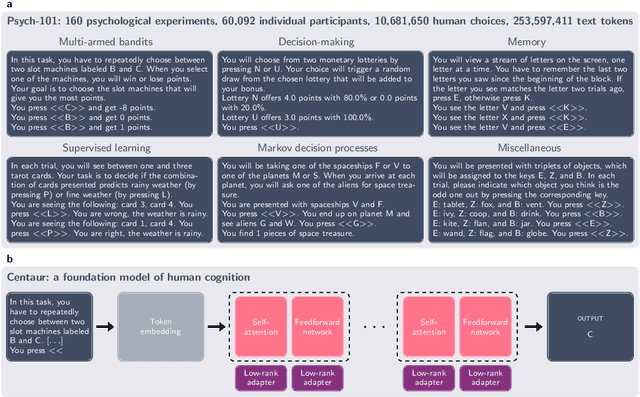
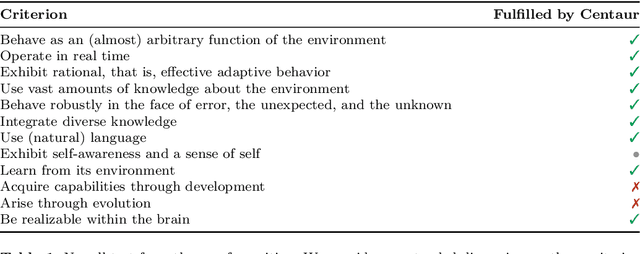
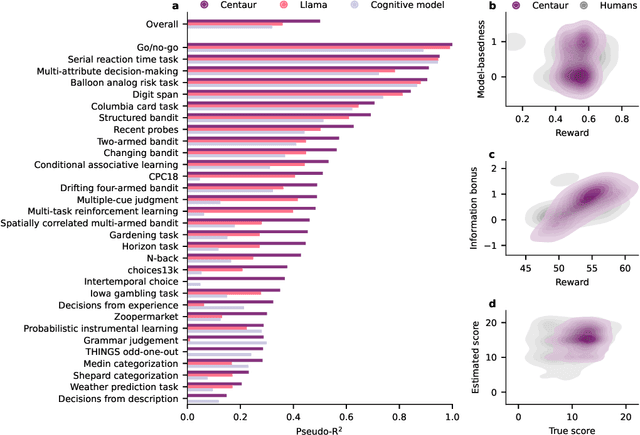
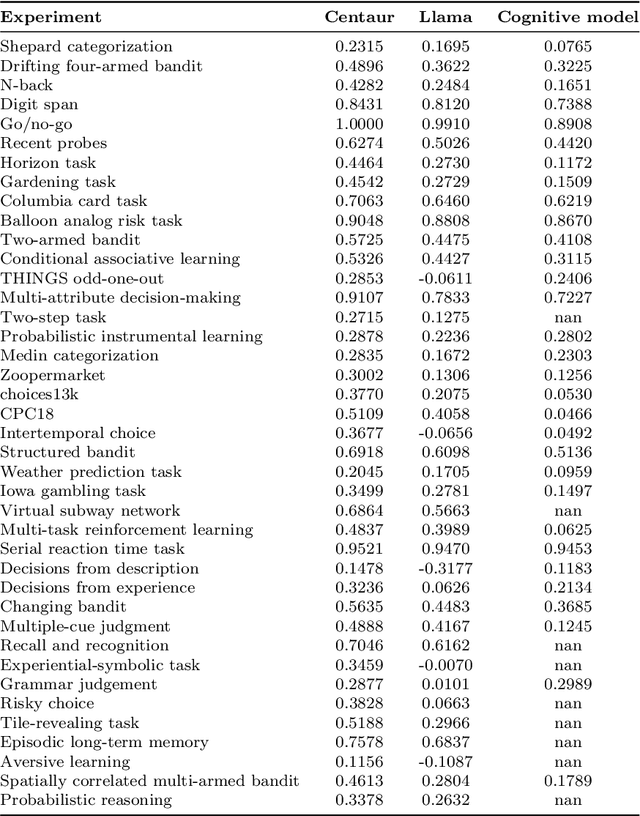
Abstract:Establishing a unified theory of cognition has been a major goal of psychology. While there have been previous attempts to instantiate such theories by building computational models, we currently do not have one model that captures the human mind in its entirety. Here we introduce Centaur, a computational model that can predict and simulate human behavior in any experiment expressible in natural language. We derived Centaur by finetuning a state-of-the-art language model on a novel, large-scale data set called Psych-101. Psych-101 reaches an unprecedented scale, covering trial-by-trial data from over 60,000 participants performing over 10,000,000 choices in 160 experiments. Centaur not only captures the behavior of held-out participants better than existing cognitive models, but also generalizes to new cover stories, structural task modifications, and entirely new domains. Furthermore, we find that the model's internal representations become more aligned with human neural activity after finetuning. Taken together, Centaur is the first real candidate for a unified model of human cognition. We anticipate that it will have a disruptive impact on the cognitive sciences, challenging the existing paradigm for developing computational models.
Real-Time Asphalt Pavement Layer Thickness Prediction Using Ground-Penetrating Radar Based on a Modified Extended Common Mid-Point (XCMP) Approach
Jan 07, 2024
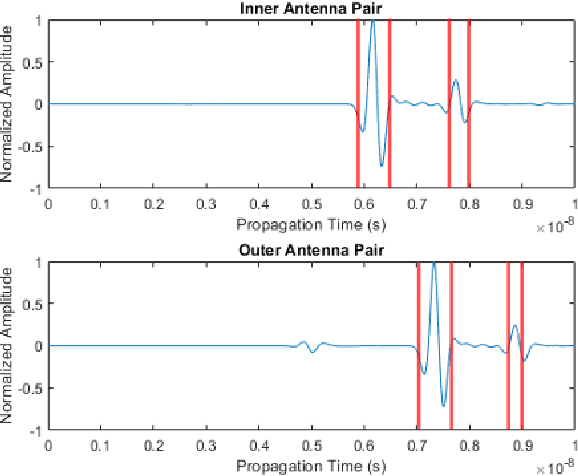


Abstract:The conventional surface reflection method has been widely used to measure the asphalt pavement layer dielectric constant using ground-penetrating radar (GPR). This method may be inaccurate for in-service pavement thickness estimation with dielectric constant variation through the depth, which could be addressed using the extended common mid-point method (XCMP) with air-coupled GPR antennas. However, the factors affecting the XCMP method on thickness prediction accuracy haven't been studied. Manual acquisition of key factors is required, which hinders its real-time applications. This study investigates the affecting factors and develops a modified XCMP method to allow automatic thickness prediction of in-service asphalt pavement with non-uniform dielectric properties through depth. A sensitivity analysis was performed, necessitating the accurate estimation of time of flights (TOFs) from antenna pairs. A modified XCMP method based on edge detection was proposed to allow real-time TOFs estimation, then dielectric constant and thickness predictions. Field tests using a multi-channel GPR system were performed for validation. Both the surface reflection and XCMP setups were conducted. Results show that the modified XCMP method is recommended with a mean prediction error of 1.86%, which is more accurate than the surface reflection method (5.73%).
 Add to Chrome
Add to Chrome Add to Firefox
Add to Firefox Add to Edge
Add to Edge